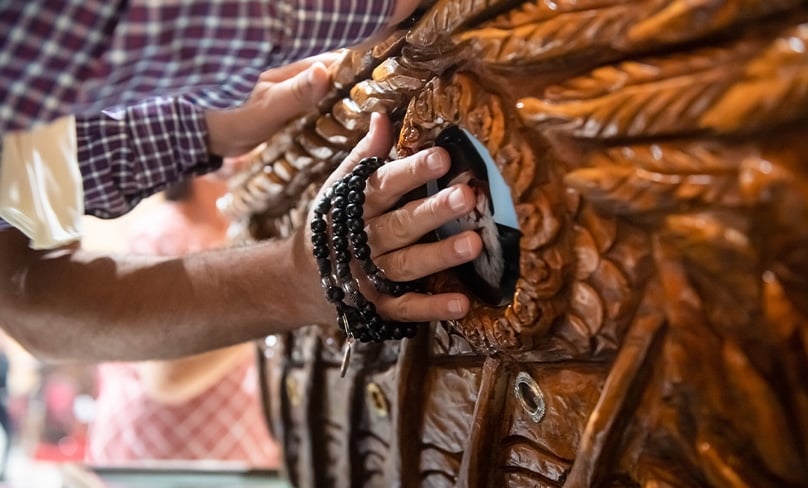
As the relics of our Maronite saints continue to tour our parishes on the momentous occasion of our Eparchy’s Golden Jubilee, it is important to recognise the blessing of being able to visit and welcome these relics. The Golden Jubilee reliquary carries first-class relics of St Charbel, St Rafqa, St Maroun, St Nehmetallah and St Mary Mackillop. First-class relics are parts or the whole body of a saint or blessed, for example, a piece of bone, blood or flesh. The Catholic Church also recognises second- and third-class relics.
Second-class relics are physical belongings of the saints, such as articles and clothing used by them, and third-class relics are objects that have been touched to a first class relic. The church prohibits the buying and selling of relics, and all relics today have documentation attesting to their authenticity.
Though there has been skepticism about relics in the past, they are instrumental in our Catholic faith, with various biblical foundations, such as “Your body is a temple of the Holy Spirit within you, which you have from God” (1 Cor 6:19). There are also examples of miracles in the Bible happening in the presence of relics, such as when a man was resurrected after touching the bones of the Prophet Elisha (2 Kings 13:20-21), when people were healed after touching handkerchiefs or aprons St Paul had touched (Acts 19:11-12), or most famously, when a woman was healed after touching the hem of Jesus’ cloak (Matthew 9: 20-22).
It is important to remember that relics are not talismans or magical items. They are not to be worshiped or adored, but rather, venerated as we venerate our saints and Mother Mary. On their own, relics are just that—a piece of bone or cloth.
While it is possible to experience miracles and healing in the presence of relics, this is through faith and God’s power alone. Miracles and healings occur only where God acts through the relics as He acts through our saints.
We venerate the relics as a reminder of God’s love of us. They are a physical reminder that Heaven is obtainable, and that we need only to recall the lives and values of these saints and pray to be able to achieve what they have achieved: life eternal. The relics of our Maronite saints are significant to us on this occasion of the Golden Jubilee of our Eparchy.
The Golden Jubilee reliquary has touched hearts where it has toured, with stories of healings and conversions being told upon seeing the relics.
As they continue to make their way around our parishes this year, they are an opportunity for us to gather in our parish communities and unite in Christ, guided by the wonderful examples set out by the lives of St Charbel, St Rafqa, St Maroun, St Nehmetallah and St Mary Mackillop.
From these saints, we can learn to seek God in all things in life—in living lives of charity, simplicity, prayer, obedience and love, which have been the values that have built our Maronite Eparchy and seen it grow into a wonderful, dynamic and prayerful community over the last 50 years, having been strengthened by the foundations of our predecessors who arrived onto Australian shores some 170 years ago.
